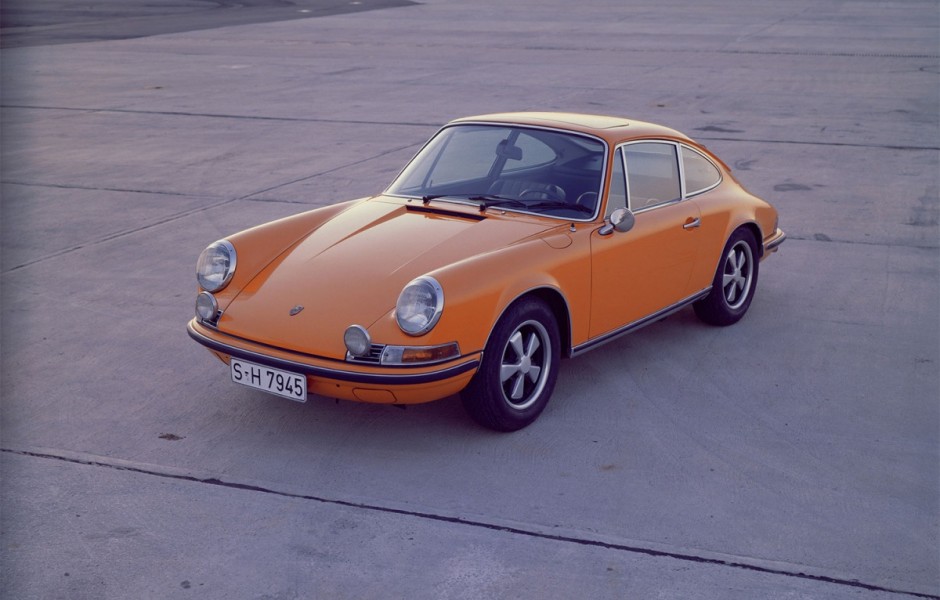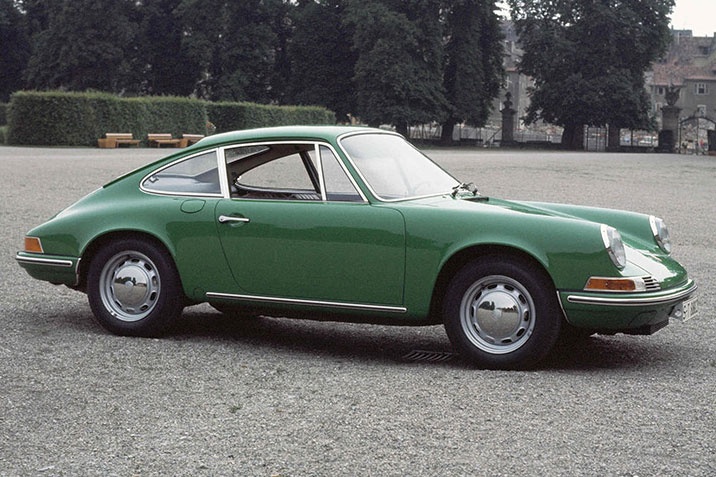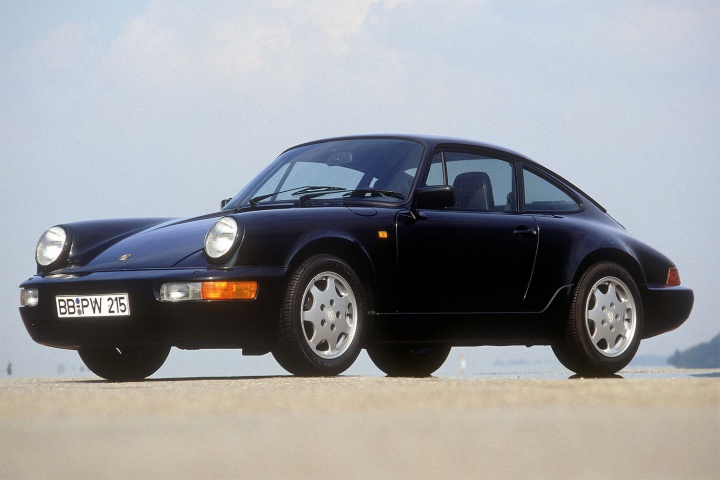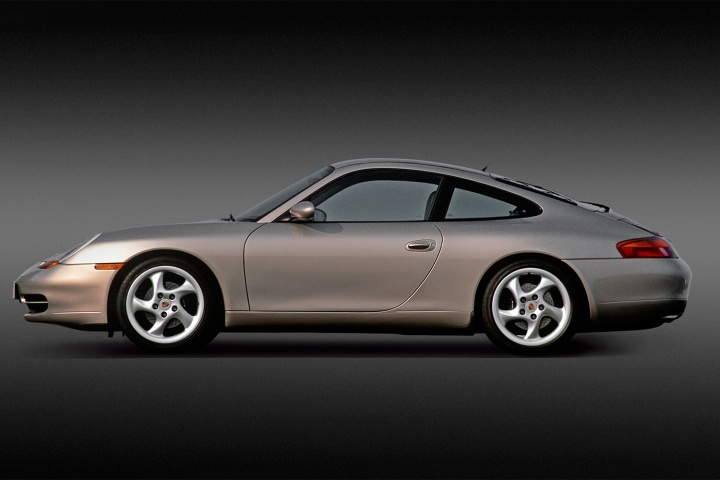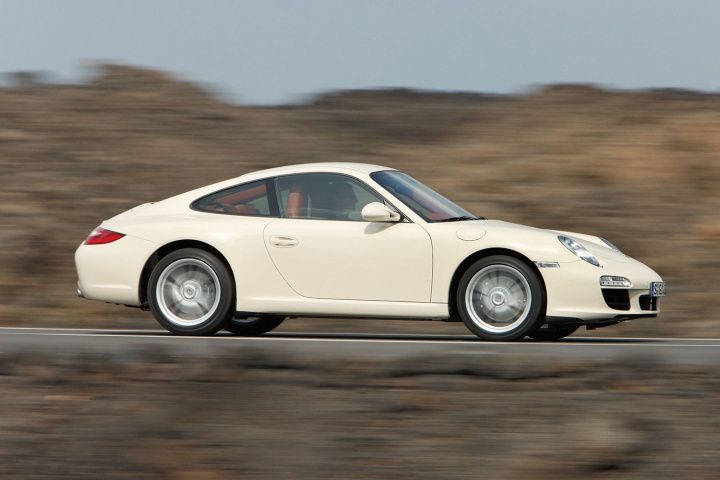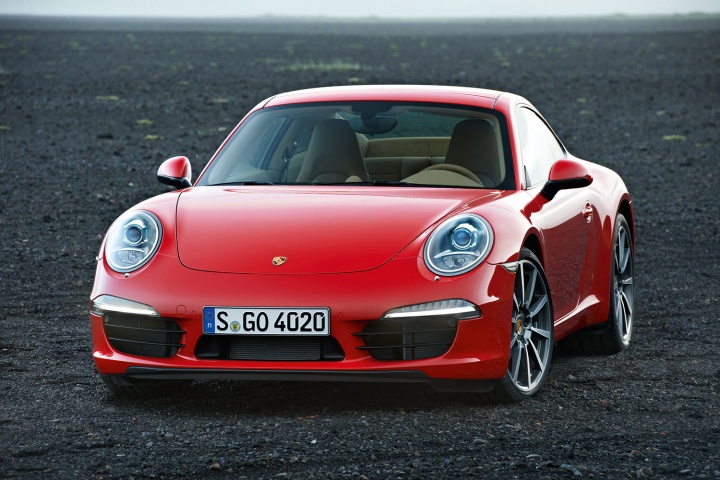We’re quick to label one car or another “iconic,” but even among the most stand-out cars and trucks ever made, all bow before the lineage of Porsche’s 911.
Why? Certainly not because the model has been reinvented time and time again. Rather, the sports car’s fame comes from Porsche’s fierce determination not to alter its Volkswagen Beetle-inspired shape, the rear-mounted engine placement, and the engaging driving experience. Heck, until this year, the standard 911 model was powered exclusively by a naturally aspirated six-cylinder engine, and while future versions will reportedly make the switch to hybrid power, the legacy will remain.
There have been dozens of variants, special editions, one-offs, and trim levels over the years, but only six generations of Porsche’s 911 – 53 years to absorb and praise (or curse). In this list, we’ll analyze each of these bodystyles and review what made them memorable.
901/911 generation (1963-1989)
The 901 design debuted at the 1963 Frankfurt Motor Show as an evolution of the Porsche 356 (which itself was born from Volkswagen’s Beetle). Though the German automaker planned to make its internal name the production label, Peugeot claimed exclusive rights to three-number vehicle names with a “0” in the middle (talk about a loophole). In the end, Porsche ceded and settled on the 911 nameplate.
Originally, Porsche merely intended to offer a larger, four-seater version of its 356, but the result was an all-new car with MacPherson struts and an air-cooled, flat-six “boxer” (cylinder configuration) engine mounted behind the rear axle. The 911 made 128 horsepower when it debuted and was connected to either a four or five-speed manual gearbox. The vehicle reached U.S. shores early in 1965.
The 901’s design came from Ferdinand Alexander “Butzi” Porsche. The 356’s fastback carried over, but the now-infamous final form was unique to the brand and industry. Further distinguishing the 911 from anything else on the road was its short wheelbase, rear weight bias and semi-trailing arm rear suspension. Despite the automaker’s efforts, the tail-happy driving nature of the 911 wasn’t resolved until much later in its lifetime.
This first generation 911 had by far the longest run (series A through F) and included the introduction of the four-cylinder 912 in 1965, the more powerful 911S in 1966, the removable-roof Targa in 1967, the de-tuned 911T (which became the 911L, and later, 911E), the motorsport-homologated Carrera RS in 1973, the feisty 930 Turbo in 1975, and the 911SC in 1978. Though the 911 grew in power, displacement, length, handling prowess, and popularity over its first 26 years, it wasn’t until 1989 that big changes began taking shape.
964 generation
In 1989, Porsche introduced the 964 generation with fancy new aerodynamic components like a retractable rear spoiler, ABS, power steering, four-wheel drive (the Carrera 4), a new suspension with coil springs, and an updated flat-six motor good for 247 hp. Equally as dramatic as the 964’s mechanical changes were the styling tweaks. Inside, the cabin was thoroughly modernized while the exterior was butched-up.
After the 964 Carrera 4 was introduced, effectively solving many of the oversteer tendencies of the previous generation, a rear-wheel drive Carrera 2 was added, along with an available four-speed Tiptronic automatic transmission.
Related: Bentley Continental GTC Speed Review
In 1990, The 964 Turbo debuted with a blistering 315 hp version of the 3.3-liter turbocharged six-cylinder from the 930 Turbo. Before the 964 was replaced in 1994, a 3.6-liter, 355 hp iteration commanded the world’s attention.
993 generation
The 1995 model year 911 was thoroughly revised and dubbed the 993 generation. Many enthusiasts remember the 993 fondly as the last of the air-cooled 911’s, and it is widely regarded as the best blend of old school looks and driver engagement, and modern performance and technology.
The 993 boasted a new suspension for better ride and handling, a more aerodynamic front end, 268 hp from the same 3.6-liter flat-six motor, and the choice of either a six-speed manual or Tiptronic transmission. The 911 Carrera RS nameplate returned as a light-bodied, 297 hp limited-run version and the Targa was reinvented with a glass roof that slid under the rear window.
On the performance end of the spectrum, the Carrera 4S and Carrera 2S were added with power bumps and wide-body designs. Finally, the 993 Turbo debuted with twin-turbochargers, permanent all-wheel drive, and nearly 400 hp. A Turbo S followed in 1997 with more power, a larger spoiler, and better cooling.
Oh, did I say that was it for the 993? Porsche actually went mental in 1997 and introduced 57 examples of the road-legal GT2. The race-homologated monster made 430 hp (450 hp in 1998), could hit 60 mph in less than 4.0 seconds, and was one heck of a swan song for the 993 generation.
996 generation
In September of 1997, Porsche revealed its first water-cooled 911, the 996 generation. In addition to breaking the air-cooled cycle, the automaker took a significant (for the 911) design leap, especially concerning the car’s headlight shape (which mimicked the entry-level Porsche Boxster).
Related: Aston Martin DB9 First Drive Review
Powering the 996 was a 3.4-liter flat-six motor making 296 hp, but that was just the tip of the performance iceberg for this generation. The Turbo, Turbo S, and GT2 pushed the envelope with over 400 hp, but enthusiasts were much more concerned with the new GT3 version. Designed as a road-legal take on the racing GT3, the model was essentially a stripped down, naturally aspirated treat, with 360 hp at its disposal in 1999 (more power was added later).
997 generation
As far as the 911’s design was concerned, the 997 generation that was introduced in 2005 was a return to form. Rounded headlights, a slick shape, and of course years of prestige helped the 997 become the best-selling 911 ever.
Not only did the 997 look “right,” it also performed on par with the world’s best sports cars, especially in terms of acceleration and handling. The 911 Turbo S that was introduced in 2010 made 516 hp and could reach 60 mph in less than 3.0 seconds. As for the standard car, 320 hp was on tap from a N/A six-cylinder while 350 hp was made available in ‘S’ designation. Bigger brakes, a lowered suspension, and Porsche’s new stability control system earned the 997 immense respect among gearheads.
While the 911 GT3 was again available in 997 form, an even more aggressive GT3 RS with a 4.0-liter naturally aspirated six-cylinder was introduced for those who liked to spend every available moment at the track. Additionally, Porsche added the “RS” treatment to its new GT2, which meant 612 hp, a 205 mph top speed, and a lap time of 7:18 – a record at the time – on the famed Nurburgring circuit. By the end of its generation, the 997 was one of the fastest cars in the world (in the right specification).
991 generation
In 2012, Porsche introduced its third platform for the 911 since the car’s inception. Longer, sleeker, and with more powertrain and drivetrain options than ever, the 991 generation Carrera is as modern as any sports car on the market, and yet is still a very engaging vehicle to drive.
Though the 991 is larger than its predecessor, it’s also lighter by 110 pounds, and more powerful, with over 400 hp available in Carrera S trim. The 991 is available with either a seven-speed manual transmission (a first for the industry) or a PDK dual-clutch unit. Porsche has released several new or refreshed 911 variants under the 991 generation, and the performance bar continues to rise (there’s now talk of a 700 hp GT2 RS – sheesh) even as some enthusiasts bemoan the 991’s more “artificial” components, such as the electric steering system.
Though many wish the Porsche 911 would forever remain as it once was, the reality is that Porsche is pressured by emissions regulations, safety standards, and the rest of the automotive industry to update its iconic sports car as consumer tastes change and technology improves. Hybrid power, more invasive driving nannies, and other changes will be incorporated over time, but the classic shape, layout, and driving thrills will live on as long as Porsche’s “911” badge does.

